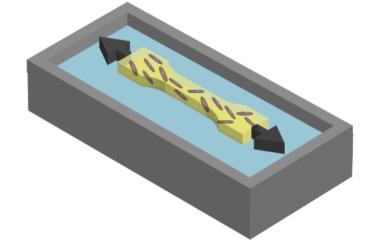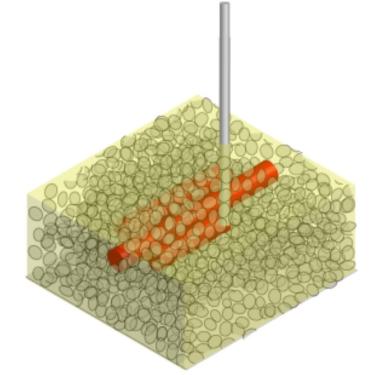Research
The Huli Materials Lab develops characterization and processing methods to quantify and program the properties of difficult to handle materials to enable functionalities desired for applications in biotechnology, sensing, and protection. Research areas in the Huli Materials Lab include: 1) ultrathin polymer films mechanics, 2) microbial biofilms mechanics, and 3) fabrication of engineered living materials.
Mechanics of Ultrathin Polymer Films
In our lab, we have a custom-built tensile tester, TUTTUT/TUFF, that can directly measure the full uniaxial stress-strain response of polymer films between 100 µm and 10 nm thickness. We are currently using this TUTTUT/TUFF to understand how decreasing polymer film thickness and glass transition temperature impacts their elastic and failure properties.

Mechanics of Biofilms
We expanded TUTTUT from beyond synthetic polymer films to biofilms. Biofilms, microbial communities surrounded by a matrix of extracellular polymeric substances (EPS), cause up to 80% of chronic infections from diabetic wounds to pneumonia in cystic fibrosis patients. In these infections, the physical and mechanical properties of the EPS matrix protect the bacteria from antibiotics and our immune system. Most studies have focused on measuring only the elastic modulus of biofilms, and there has been less work on the tensile properties of biofilms due to difficulties in handling biofilms. Thus, our lab uses TUTTUT to understand how these biofilms adapt their mechanics in different external environments, from the wound infections to pipes.

Fabrication of Engineered Living Materials
The next generation of polymeric materials will need features typically associated with biological systems: programmable material properties and chemical composition, self-healing and self-regenerating behaviors, enhanced survivability in extreme environments, and the ability to respond to diverse external stimuli. While engineering synthetic materials with such capacities is a grand challenge, these properties are inherent to biofilms and mycelium. As a result, our lab leverages fungi and biofilms to fabricate engineered living materials. Engineered living materials (ELMs) are an emerging class of materials where microorganisms are leveraged to fabricate multifunctional materials with biological capabilities. In our lab, we are developing structure-property-genotype/phenotype relationships for ELMs for different applications including aerospace, biosensors, and indoor air quality.

